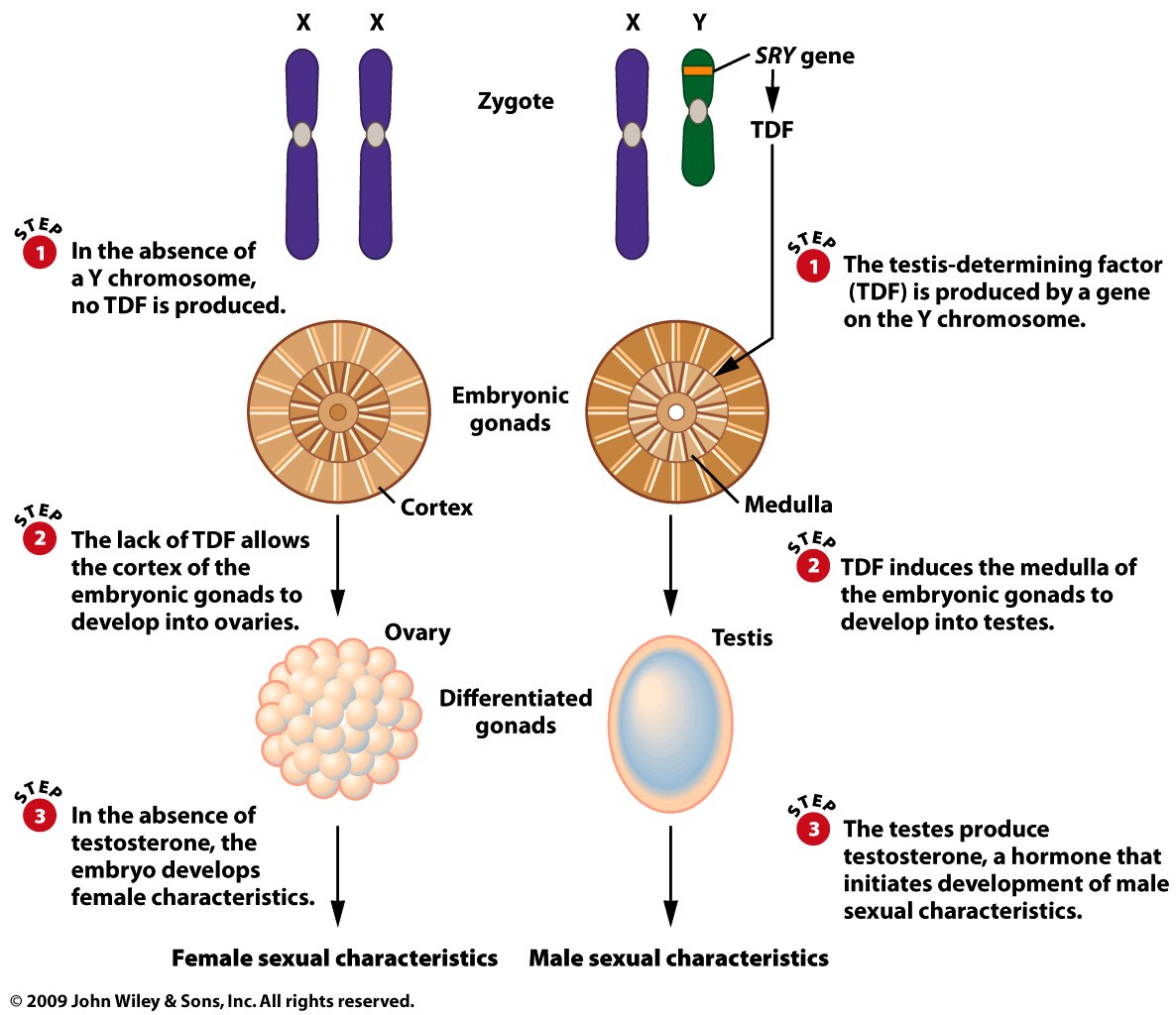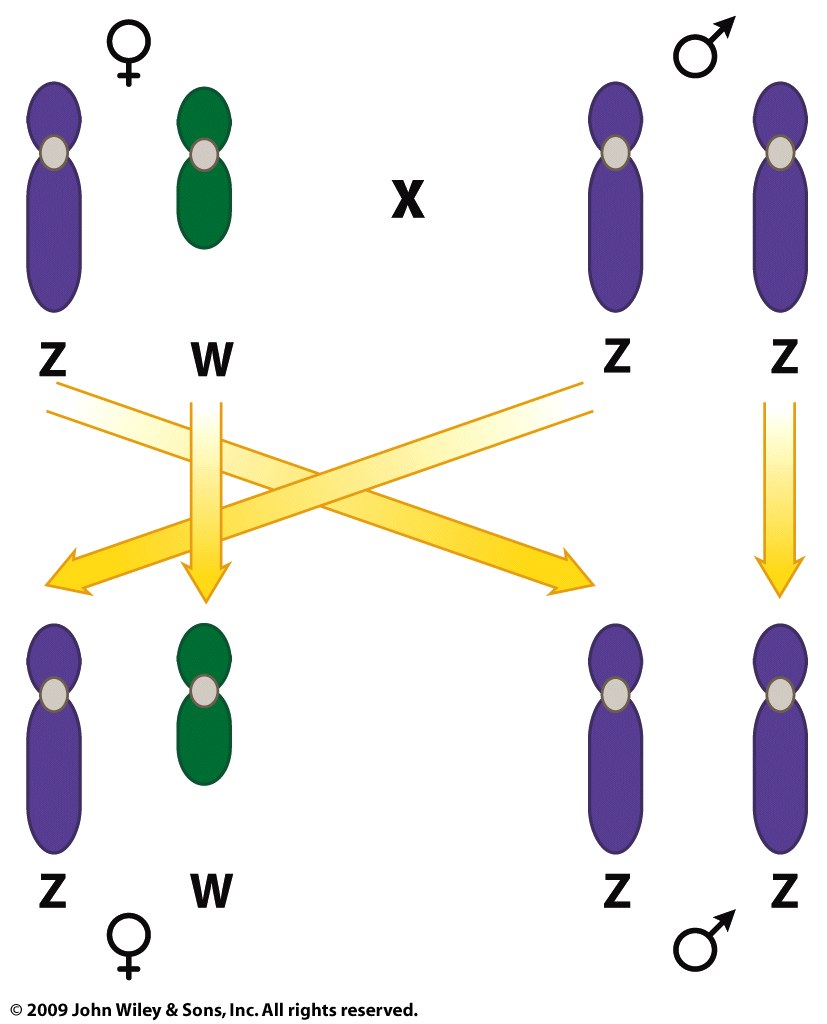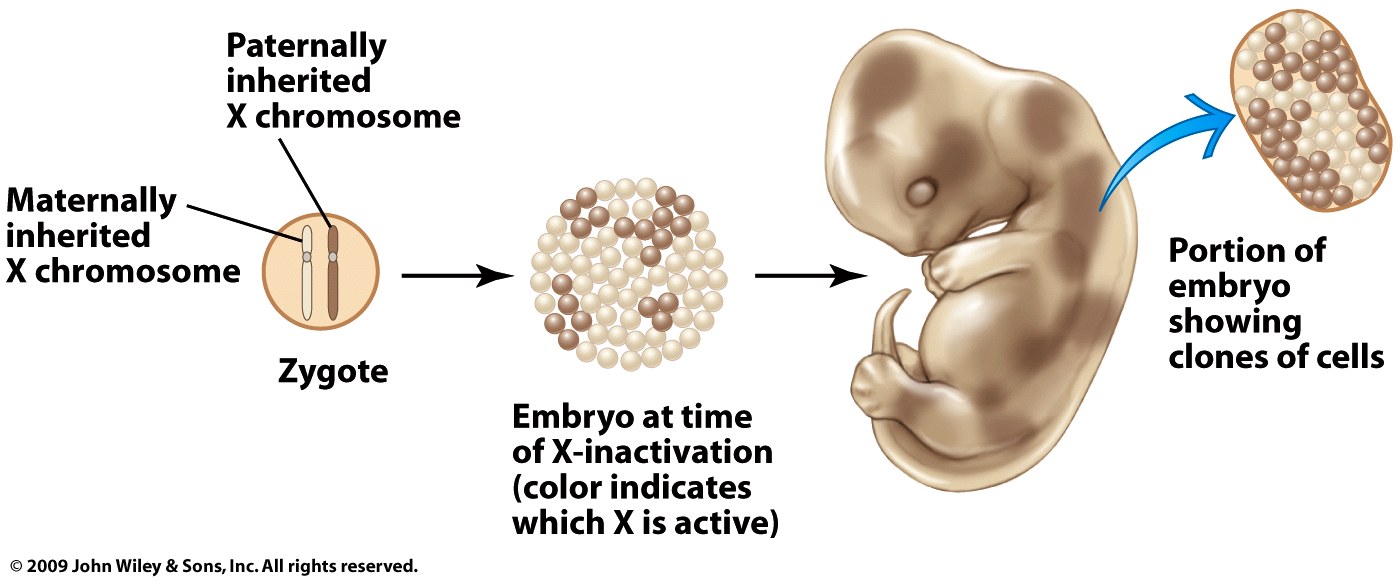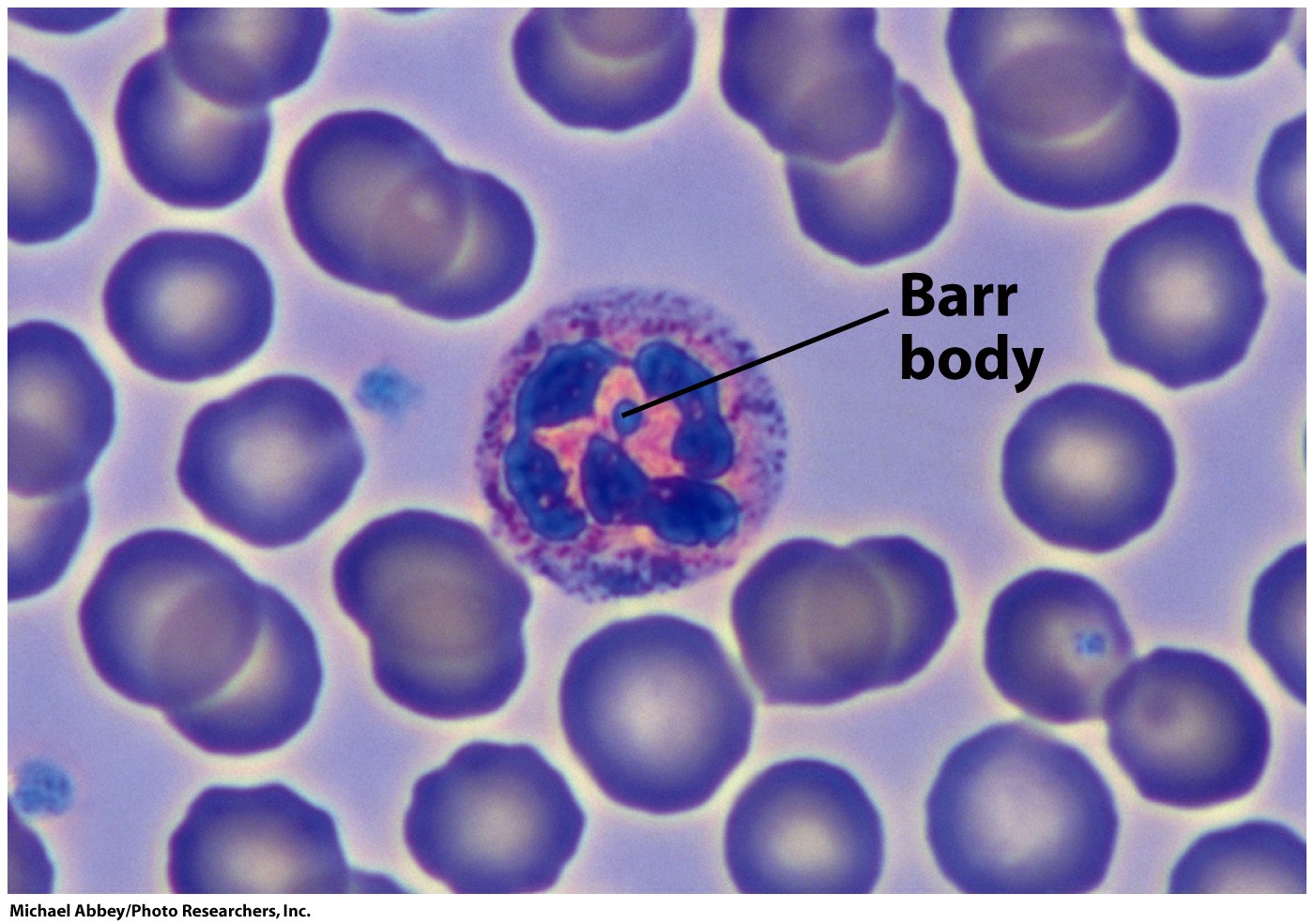There
may be some things better than sex, and some
things worse, but nothing is exactly like it.
W. C. Fields
- Sex Determination: Sex determination
occurs by a variety of mechanisms.
- Monoecious and Hermaphroditic Organisms:
Some organisms do not have separate sexes but produce
both gametes, usually from separate male and female
reproductive organs. Male and female tissue have the
same genes, so the difference is not genetic. Most
plants are monoecious. Many animals, like the earthworm,
Lumbricus and
the snail, Helix, are hermaphroditic. The
earthworm has separate testes and ovaries while Helix
has a single gonad that makes both egg and sperm.
- Environmentally Determined Sex: In
some organisms, sex is determined by the "environment."
In the marine worm Bonellia
(Phylum: Echiura), if the larva settles to the bottom
where there are no other females around, it will develop
into a female. If, however, it lands on a female's
proboscis, it develops into a male and lives in the
cloaca of the female. It is tiny and has no digestive
system. Other examples of environmentally determined sex
include some nematode parasites where high population
density in the host results in males, while low density
in the host results in females. Among the reptiles, sex
determination in some turtles, lizards, and crocodilians
is dependent on the temperature at which the egg
is incubated. (Also seen in some birds). Among plants,
sex determination in some orchids is such that plants in
bright sunlight develop into females and those in shade
develop into males. (Reference for these is here)
|
- Genetically Determined Sex: Sex is
determined genetically in most organisms.
- Single-Gene Systems: In organisms
like the the green alga Chlamydomonas
and the fungi Saccharomyces
and Neurospora,
a single gene determines the mating type. In Saccharomyces,
there are two mating types: a and α
determined by a single gene. A similar case exists
between the two mating types in Neurospora
(A and a) and the two mating in Chlamydomonas
types (mt+ and mt-).
|
- Euploid Systems: In some
hymenopterans, sex is determined by the ploidy of the
individual. If a queen honey bee's eggs are fertilized
(2N) they become females but if not, they develop
parthenogenetically into males (1N). Females produce
eggs by meiosis but males produce sperm by mitosis or
altered meiosis. (Queen eats royal jelly and becomes
fertile.)
|
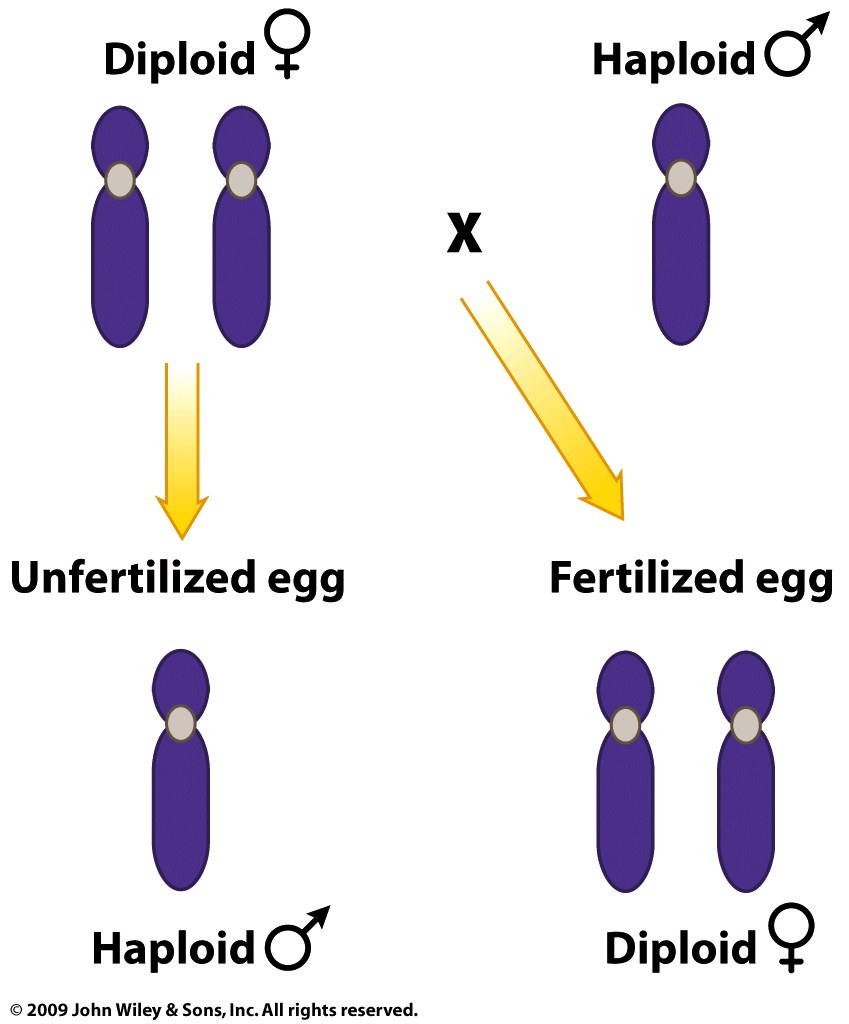 |
- Sex Chromosomes: Many
animals and some plants have a sex-chromosome
mechanisms for sex determination.
- XY or XO Systems:
The female is homogametic and the male is
heterogametic. In grasshoppers, males have one X and
females have two (there is no Y).
- Balance Theory of Sex
Determination: In Drosophila,
sex is determined by the ratio of X chromosome
sets to autosome sets but
the Y is necessary for fertility. (X/A≥1 is
female, X/A≤0.5 is male, others are intersex.)
There is a master gene (Sxl, Sex-lethal)
which controls sex determination and is controlled
by the X:A ratio. The mRNA of this gene can be
alternatively spliced, producing a functional
protein in females and a non-functional protein in
males.
- Summary: Sex in fruit flies is determine by
the ratio of the number of X chromosomes to the
number of SETS OF autosomes: X/A. If it is ≥1,
the fly is female. If it is ≤0.5, it is male.
|
- Y Determination in Mammals:
In mammals, sex is determined by the presence or
absence of the Y chromosome More specifically,
maleness is determined by the presence of the gene
SRY on the Y (sex-determining region Y). This gene
codes for a protein transcription factor called
testis-determining factor (TDF). The presence of
TDF causes embryonic changes which result in the
undifferentiated future gonad to develop into a
testis. (Many other Y genes having to do with
fertility.)
- Summary: Sex in mammals is determine by the
presence or absence of a gene, called SRY, on
the Y chromosome. This gene makes a protein,
called TDF, which turns the embryo's gonad into
a testis. In its absence, the gonad becomes an
ovary.
|
|
|
- Dosage Compensation: Since XX females have
one more X chromosome than males, there is a mechanisms to
equalize the dose of X-linked genes between males and
females.
|
- Lyonization (X Inactivation): In
mammals, dosage compensation is accomplished by
Lyonization: the random (?) inactivation of one X
chromosome early in development. (Barr bodies and
tortoise-shell or calico cats.) This inactive X can be
seen as a Barr body in females (heterochromatinized X
chromosome).
- Summary: A mammal will inactivate all but one of its
X chromosomes, thus equalizing the dosage of X
chromosomes in males and females. This inactivation
occurs by the heterochromatization of the chromosome.
-
|
- Other Mechanisms: In Drosophila,
dosage compensation is by another mechanism. The same
Sxl gene involved in sex determination causes increased
transcription of the genes on the single X of males so
that it is the same as that on the two Xs of females.
|
- Sex-Linked Traits versus Sex-Limited Traits
versus Sex-Influenced Traits: Each of these
phenomena can result in differences between the results of
reciprocal crosses. Sex-linked traits involve genes on a
sex chromosome. Sex-limited traits involve autosomal genes
expressed genes that are only expressed in one sex (Cock
feathers in fowl). Sex-influenced traits involve autosomal
genes that are expressed when heterozygous in one sex but
not in the other sex (male pattern baldness in humans used
to be believed to be due to a sex-influenced gene. One
type is now known to be be involved with an X-linked gene
that is a variant of an androgen receptor: see this
info from "23andMe").
|
Things I Learned
at the Movies:
All bombs are fitted with electronic timing devices with
large red readouts so you know exactly when they're going to
go off.
|
![]()

 Home
Home Lectures
Lectures Online
Online Tests
Tests Extra
Extra